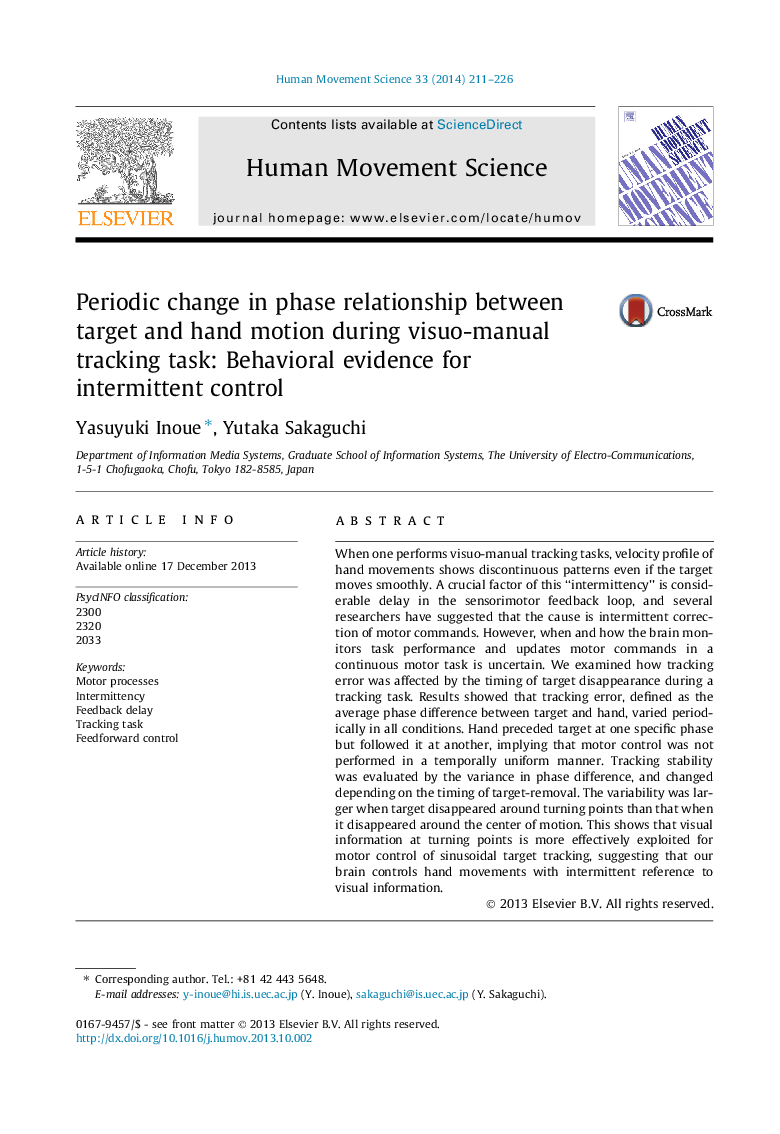| Article ID | Journal | Published Year | Pages | File Type |
|---|---|---|---|---|
| 7292551 | Human Movement Science | 2014 | 16 Pages |
Abstract
When one performs visuo-manual tracking tasks, velocity profile of hand movements shows discontinuous patterns even if the target moves smoothly. A crucial factor of this “intermittency” is considerable delay in the sensorimotor feedback loop, and several researchers have suggested that the cause is intermittent correction of motor commands. However, when and how the brain monitors task performance and updates motor commands in a continuous motor task is uncertain. We examined how tracking error was affected by the timing of target disappearance during a tracking task. Results showed that tracking error, defined as the average phase difference between target and hand, varied periodically in all conditions. Hand preceded target at one specific phase but followed it at another, implying that motor control was not performed in a temporally uniform manner. Tracking stability was evaluated by the variance in phase difference, and changed depending on the timing of target-removal. The variability was larger when target disappeared around turning points than that when it disappeared around the center of motion. This shows that visual information at turning points is more effectively exploited for motor control of sinusoidal target tracking, suggesting that our brain controls hand movements with intermittent reference to visual information.
Related Topics
Life Sciences
Neuroscience
Cognitive Neuroscience
Authors
Yasuyuki Inoue, Yutaka Sakaguchi,
